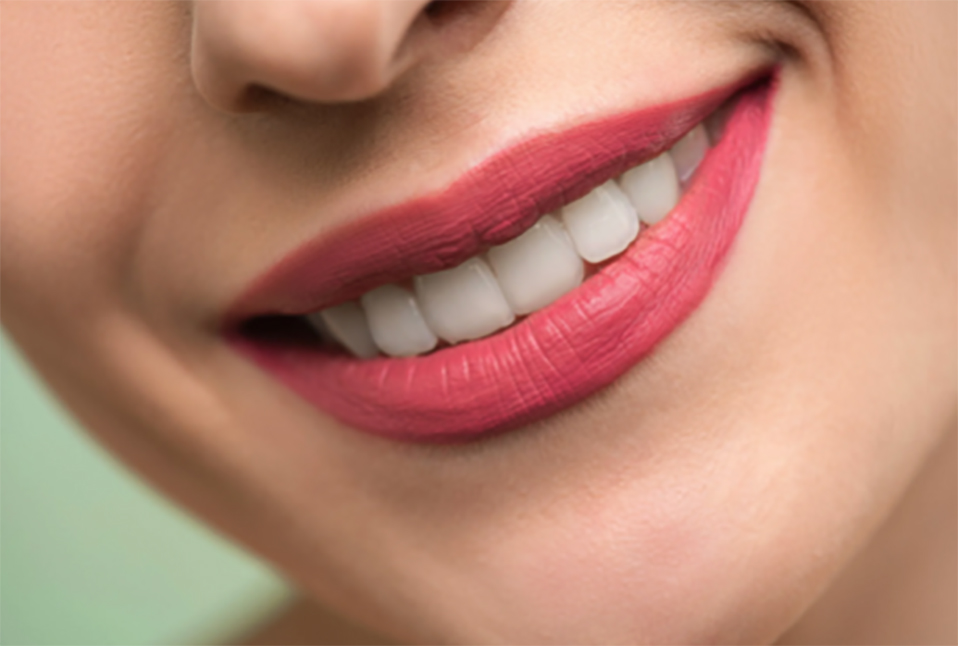When it comes to creating and keeping a beautiful and healthy smile, there is no denying that your dentist plays a key role. In diagnosing issues, recommending treatment, and ensuring a high quality of outcome, there’s no replacement for a professional. However, just as much of the responsibility of caring for your teeth falls upon you, as well. For that reason, we’re looking at the many ways you can both protect and improve your smile at home.

The essentials of brushing
It might sound silly, given that we all learn to brush our teeth as children and should know perfectly well how to do it now. However, we can grow up and live for years with bad brushing habits that are not cleaning our teeth as effectively as they should. For one, most dentists will recommend that you use an electric toothbrush as they tend to be better at reaching more of the surface area of our teeth while also providing enough friction to shift more plaque and tartar than we might, alone. Check out some of the other common mistakes made when brushing your teeth and ensure that you’re doing it at least twice a day, with in the morning and before bed being the most important times.
Finer flossing
When it comes to preventing cavities and gum disease, flossing your teeth might even be more valuable than brushing your teeth. There are a lot of people who find trouble flossing with the average dental floss that you can find in any store, however. If you find yourself experiencing discomfort or find that dental floss gets stuck when you try to use it, then you might want to look at some of the other options available. There are, for instance, floss brushes, floss picks, and interdental flosses. Water flossers might be a little more expensive, given that they’re a wholly electronic device, but a lot of people who have trouble flossing otherwise find that they are great for providing general and gentle gum care.
Make the most out of mouthwash
The last of the essential at-home care steps is to make sure that you’re using mouthwash every time you brush. Choosing the right mouthwash is essential, first of all. Some kinds of mouthwash are better for those who are fighting gum disease, for instance, while others are better suited to those who want to tackle issues like bad breath. When you use mouthwash, you want to follow the instructions provided on the bottle where possible. In general, however, it doesn’t matter whether you rinse before or after you brush and floss. You want to make sure you give it enough time to swish around the mouth, usually between half a minute and a full minute. It’s also crucial to do it consistently, as it can take weeks for the results to show.
Taking care of your gums
A lot of people were undergoing long-term gum disease treatment before dentists stopped accepting patients in for appointments that weren’t emergencies. Even dental practices that are opening up are pushing non-essential treatments far back in their calendars. To make sure that you’re giving your gums the care that they deserve, there are a few steps you can take. Flossing and using mouthwash is essential. However, make sure that you’re using a therapeutic mouthwash and not a cosmetic one. Those ones tend to have stronger ingredients so be sure to read the instructions carefully to avoid any unwanted side effects (as some can stain teeth if you’re not careful.) Be sure to use fluoride toothpaste as well, brushing right up to the gum line to clear the plaque that can cause gum disease.
Brightening your smile
If you’re experiencing tooth discoloration or staining, then a cleaning at the dentist’s office is the best approach for it. However, that’s not always possible or effective enough. You may want to see your teeth become a few shades brighter and, to that end, there is nothing like a good whitening. Thankfully, there are plenty of at-home whitening kits that can make sure you get that brightening even when you don’t have the dentist available to do it for you. There are different kinds of whitening kits but, if you plan on doing it regularly, you should get the kind that makes use of a light-emitting device to cure it, as the effects tend to last longer.
Correcting your blemishes
Whitening isn’t the only way to deal with discoloration. Some people would rather not try to whiten their teeth without the help of a dentist. For them, veneers may be a more reliable option. There are now veneers that can get delivered directly to your home, too. Not only can they help with discoloration, but veneers are also used to treat all manner of aesthetic issues, including chips, cracks, slight misalignments, and more. Nowadays, there are services that will have customers take impressions of their own teeth and send them off so that clip on veneers can be made and sent back, installed without the help of a dentist.

Managing mouth ulcers
Another common problem that can be dealt with in your own home is that of mouth ulcers. There are plenty of mouth ulcer gels that can be used to soothe and help lessen them, with lidocaine being the most frequently used active ingredient. Using a hot salty mouthwash for a couple of weeks should help reduce the ulcer as well. However, if the ulcer refuses to heal during that time, then it may be considered an emergency and worth getting in touch with your dentists about, after all. In most cases, ulcers just need time to disappear.
If you experience any new problems with your teeth, gums, or oral health in general, then do not hesitate to get in touch with your dentist. However, if you’re looking for ways to improve your fight against older issues that your dentist already knows about, then the tips above can help.

























